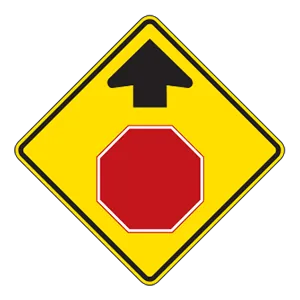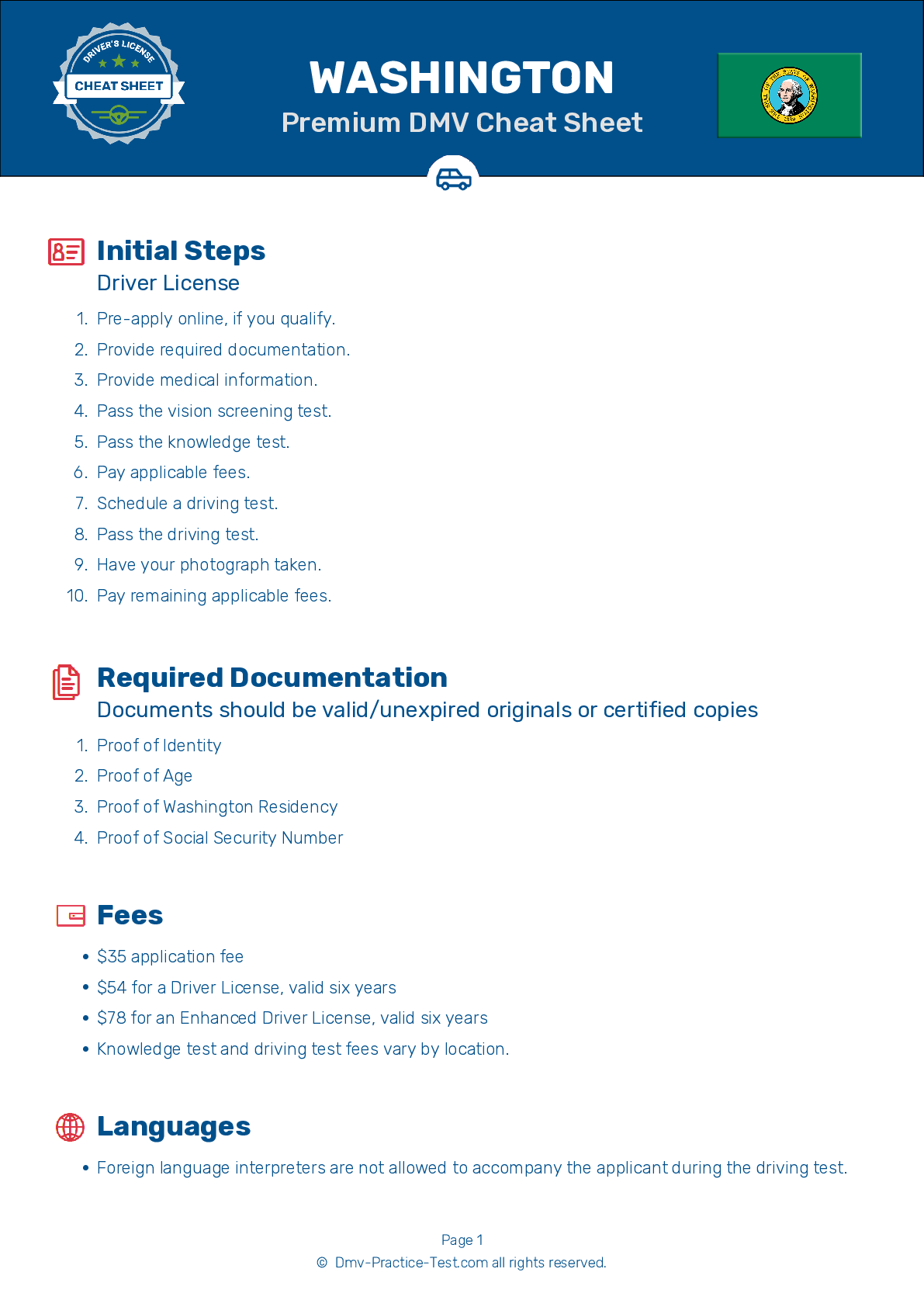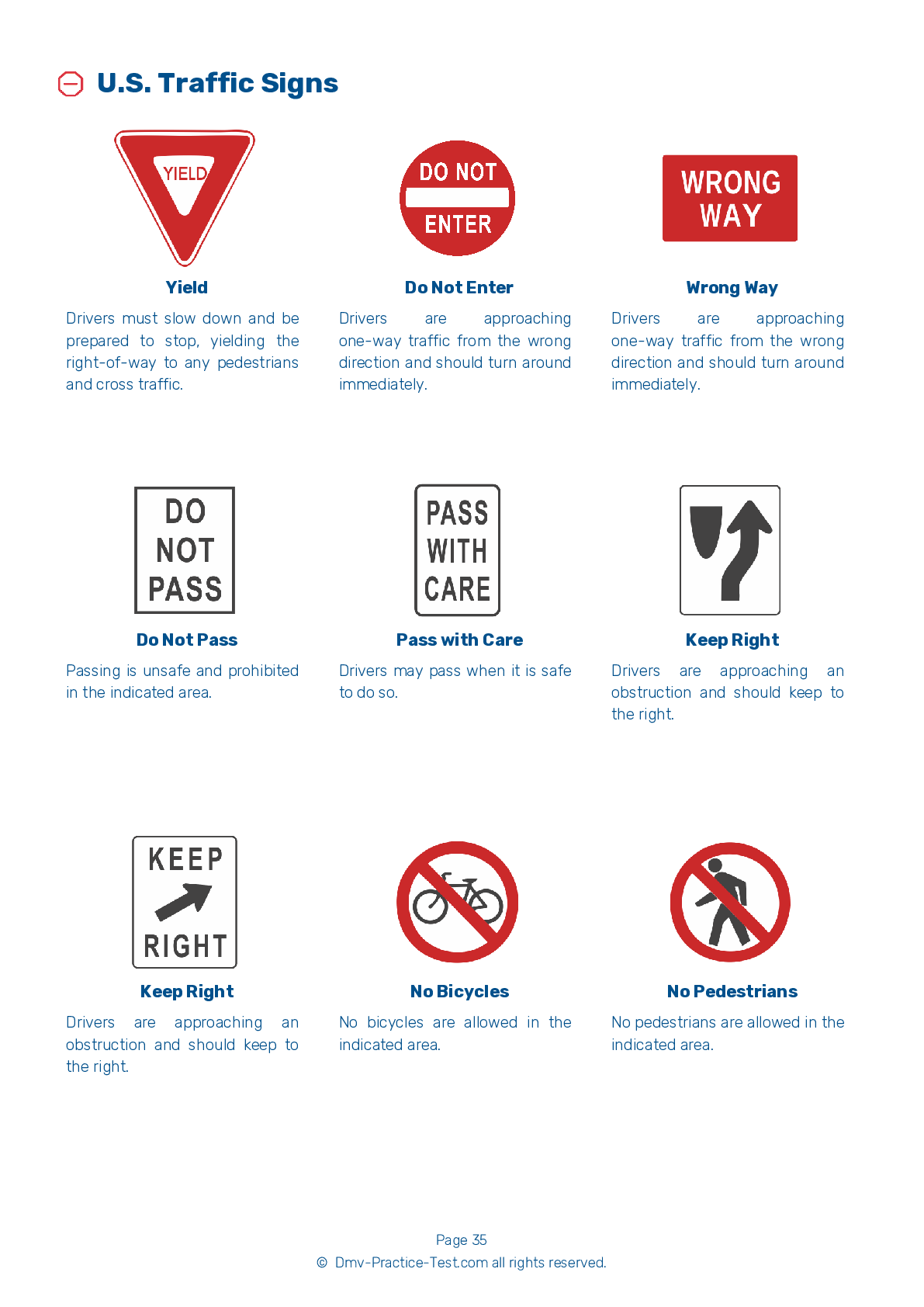FREE Washington DMV Practice Test #12 Page 4 of 4
The Washington DMV practise examinations have been updated for January 2025. It includes questions based on the Washington Driver Handbook's most significant traffic signals and legislation for 2025. Use actual questions that are very similar (often identical!) to the DMV driving permit test and driver's licence exam to study for the DMV driving permit test and driver's licence exam.
On the practise exam, each question gets a tip and explanation to help you remember the concepts. The written component of the official Washington DMV test will feature questions about traffic rules, traffic signs, and driving statutes, as well as knowledge from the Driver Handbook.
To obtain a passing grade, you must correctly answer 20 of the 25 questions. Use the practise exam provided by the Washington Department of Motor Vehicles to help you prepare for your instruction permit or driver's licence.
The DMV exam is available in several languages.
Using any kind of testing assistance will result in an automatic fail, and the DMV may take additional action against your driver's licence, so stay away from it.
19 . You must dim your high beam lights when within:
You must dim your high beams whenever you are within 500 feet of an oncoming vehicle.
20 . Any time you want to merge with other traffic, you should:
Anytime you want to merge with other traffic, you need a gap of about four seconds. If you move into the middle of a four-second gap, both you and the vehicle behind you have a two-second following distance. You need a four-second gap whenever you change lanes, enter a roadway, or when your lane merges with another travel lane.
21 . If you operate a motor vehicle registered in Washington State, you must:
If you operate a motor vehicle registered in Washington State, you must have liability insurance and carry proof that you have such insurance.
22 . It is important to slow down:
You should always slow down when driving on narrow or winding roads, near intersections, near railroad crossings, on hills, in sharp or blind curves, where there are pedestrians or driving hazards, and when the roads are wet or slippery.
23 . This sign means:

Warning signs prepare drivers for upcoming road conditions and hazards and are usually yellow with black markings. This sign tells drivers that there is an upcoming stop sign and that they should prepare to come to a complete stop before proceeding.
24 . This road sign means:

This sign indicates that the overpass ahead has a low clearance. You should not proceed if your vehicle is taller than the height shown on the sign (in this case, 13 feet 6 inches).
25 . Anything that requires you to ____ could cause you to crash.
Anything that causes you to take your attention away from driving, take your eyes off the road, and/or take your hands off the wheel is a distraction.
See the exact questions that will be on the 2025 Washington DMV exam.
99.2% of people who use the cheat sheet pass the FIRST TIME
LT gives us an insight on how the cheat sheet provided her with all the study questions she needed before taking her test.
Joe initially studied with the handbook and failed his test, he eventually found us online, studied and pass his test the first time around.
2025 Washington | Frequently Asked Questions
1. Complete a driver education course if you're under 15 ½.
2. Visit a driver licensing office.
3. Provide proof of identity, Social Security number, and residence.
4. Pass the knowledge test.
5. Pay the required fee.
6. If you're under 18, a parent or guardian must sign the application.
Remember, with a permit, you must always have an adult 21 years or older in the car with you.
1. Not checking mirrors and blind spots.
2. Incorrect signaling or forgetting to signal.
3. Lack of steering control.
4. Improper lane positioning and changing.
5. Not following traffic signs or signals.
6. Inadequate observation at intersections.
7. Speeding or driving too slowly.
8. Failing to yield the right of way where necessary.
Remember, practice is key to overcoming these errors.



